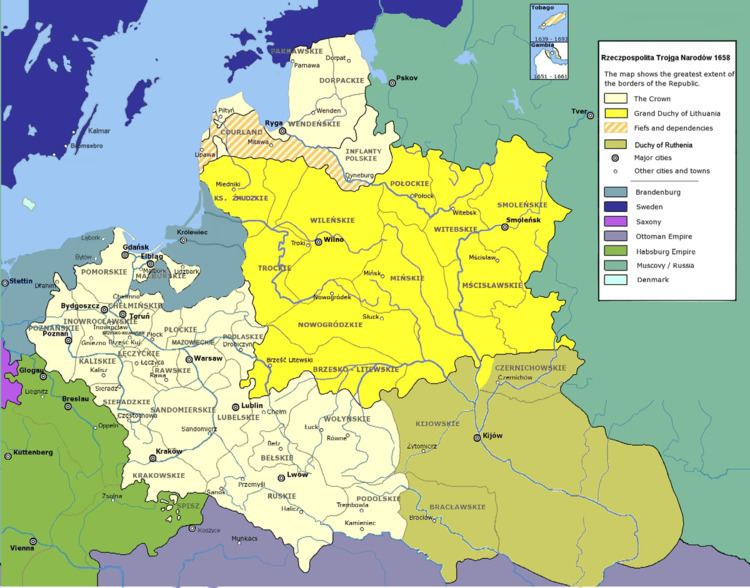 | ||
Polish–Lithuanian–Ruthenian Commonwealth (Polish: Rzeczpospolita Trojga Narodów, Commonwealth of Three Nations) was a proposed (but never actually created) European state in the 17th century that would have replaced the existing Polish–Lithuanian Commonwealth.
The creation of a Duchy of Ruthenia was considered at various times, particularly during the 1648 Cossack insurrection against Polish rule in Ukraine (see Khmelnytsky Uprising). Such a Ruthenian duchy, as proposed in the 1658 Treaty of Hadiach, would have been a full-fledged member of the Polish–Lithuanian Commonwealth, which would thereby have become a tripartite Polish–Lithuanian–Ruthenian Commonwealth. In May 1659, the Polish Diet (Sejm) ratified the treaty with an emended text.
The idea of a Ruthenian Duchy within the Commonwealth was completely abandoned. Canadian historian Paul Robert Magosci believes that it happened due to divisions among the Cossacks and Russian invasion which, however, both occurred much earlier than the Treaty of Hadiach was signed. Russian historian Tairova-Yakovleva considers the resistance of the Polish society and the papal pressure as the reasons for the incomplete ratification.
The idea of Polish–Lithuanian–Ruthenian Commonwealth returned during the January Uprising, when in 1861, a patriotic demonstration took place at Horodło. The so-called Second Union of Horodło was announced there, by the szlachta of Congress Poland, former Grand Duchy of Lithuania, Volhynia and Podolia. New Poland, based on the Second Union of Horodło was to be based on the three nations, and its proposed coat of arms consisted of Polish eagle, Lithuanian Pahonia, and patron saint of Ruthenia, Archangel Michael.
